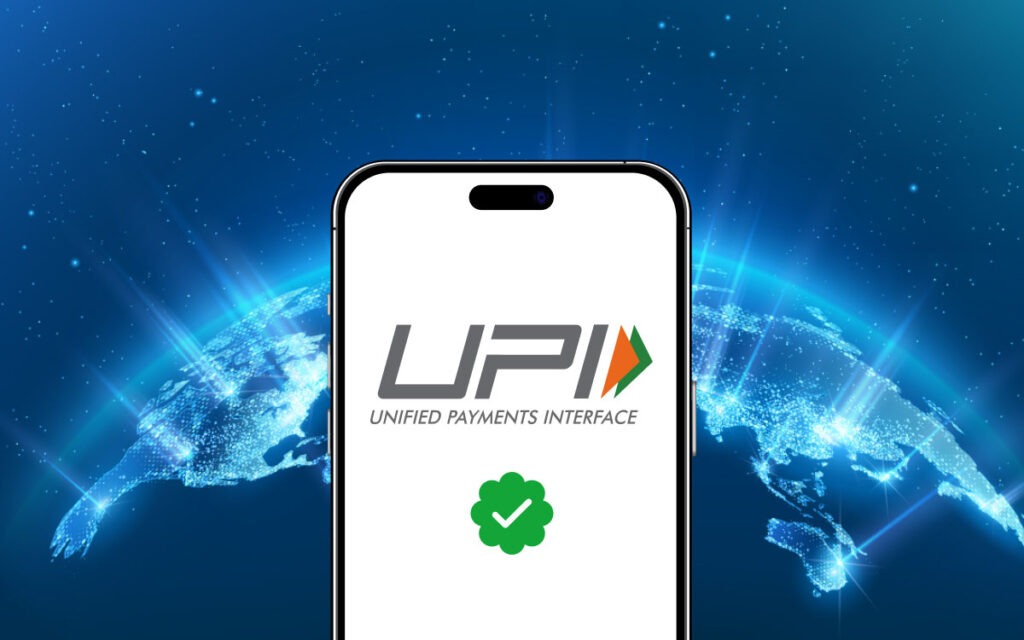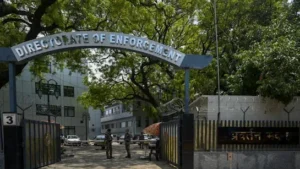Decoding UPI: Why Your Business Might Be Overpaying for Payments
Ever wondered how that super quick payment you just made with your phone actually works? You know, the one where you scan a QR code or punch in an ID and, poof, money’s gone from your account and landed in someone else’s? In India, this magic is largely thanks to something called UPI, or the Unified Payments Interface. It’s become incredibly popular, a go-to for everything from splitting a dinner bill with friends to paying for your groceries. It’s fast, it’s handy, and it just works. But here’s a thought: if you’re running a business and relying on UPI for transactions, you might, just might, be shelling out more than you need to. Let’s dig into why.
A simplified view of how a UPI transaction might look.
Understanding the Payment Landscape
Before we get too deep into UPI itself, it’s worth taking a quick look at the broader world of digital payments. When you’re dealing with money, especially in a business context, there are typically a few main ways folks prefer to pay. Credit and debit cards are, of course, global staples. Then, in a country like India, UPI has truly taken off. And for those operating internationally, or perhaps dealing with clients across borders, services like PayPal are quite common. Each of these methods comes with its own set of rules, and, crucially, its own fee structure.
For instance, if you’re using a major payment processor, you might see charges around 2% for cards issued locally, and perhaps 3% for international cards. Other providers might quote a similar 2% plus an additional Goods and Services Tax (GST), which can push the effective rate to something like 2.36%. These rates often cover not just card transactions but also UPI, net banking, and even EMI options. It seems pretty standard, right? But this is where things get interesting, especially when it comes to UPI.
- Common Payment Methods: Credit/Debit Cards, UPI (in India), International services like PayPal.
- Typical Transaction Fees: Often around 2% to 3% for cards, sometimes with additional taxes like GST.
- Providers: Major payment gateways often bundle various payment methods under a single fee structure.
The Hidden Costs: A Business Case Study
To really grasp the impact of these fees, let’s consider a hypothetical scenario. Imagine a platform, let’s call it “InnovateEd,” that helps educators sell their online courses. InnovateEd operates on a revenue-sharing model, meaning they only make money when their educators do. So, their success is directly tied to the success of their users.
Let’s say an educator, we’ll call them Professor Anya, sells a blockchain course for ₹3,500 (or, you know, maybe $200 USD for international students). When a student buys this course, the ₹3,500 payment isn’t just one lump sum going to Professor Anya. It gets broken down. First, InnovateEd takes its platform fee, say 10%. This 10% covers a lot: the website infrastructure, video hosting, security, user analytics, and live streaming for courses. It’s a necessary cost for running the platform.
But then there’s another chunk: the transaction fee imposed by the payment gateway. If the student used UPI, that 2% plus GST (effectively 2.36%) comes into play. On a ₹3,500 course, that’s roughly ₹82-₹83. So, after InnovateEd’s 10% and the payment gateway’s cut, Professor Anya might receive around ₹3,067.
Now, ₹82-₹83 might not seem like a huge amount on a single transaction. But what if Professor Anya sells a more expensive course, say for ₹5,500? The payment gateway fee jumps to around ₹130. As a business, InnovateEd is always trying to optimize these costs. They might try to negotiate with local payment providers to bring that 2% down to 1.8% or even 1.7%. But what if I told you there’s a way to slash that fee even further, perhaps to almost nothing, especially for UPI?
| Cost Component | Impact on Revenue (Example: ₹3,500 course) | Impact on Revenue (Example: ₹5,500 course) |
|---|---|---|
| Platform Fee (e.g., InnovateEd’s 10%) | ₹350 | ₹550 |
| Payment Gateway Transaction Fee (2.36% of course price) | ~₹82-₹83 | ~₹130 |
| Educator’s Net Earning | ~₹3,067 | ~₹4,820 |
A breakdown of how transaction fees can impact an educator’s earnings.
- Revenue Sharing Model: Platforms like InnovateEd earn when their creators do.
- Fee Breakdown: Payments are split into platform fees and payment gateway transaction fees.
- Impact of Fees: Even small percentages can add up, significantly impacting net earnings, especially with higher transaction volumes.
- Optimization Efforts: Businesses often negotiate with payment providers to reduce these rates, but there are limits.
How UPI Really Works: The Zero MDR Revelation
So, how does UPI actually function, and why is there this potential to pay less? Let’s simplify it. You’ve got your phone, right? And on that phone, you probably have an app like Google Pay, PhonePe, or Paytm. These are what we call Payment Service Provider (PSP) apps. They’re your interface to the UPI network.
But here’s a crucial point: UPI isn’t a payment gateway or a digital wallet in itself. It’s an underlying infrastructure. Think of it like a superhighway for money. And this superhighway isn’t open to just anyone. Its APIs (the technical bits that allow different software to talk to each other) are primarily accessible to banks in India. Banks like ICICI Bank, HDFC Bank, Yes Bank, and SBI Bank are directly connected to this UPI infrastructure.
The entire UPI infrastructure is controlled and maintained by the National Payments Corporation of India (NPCI), which is a government organization. They built this system, and they keep it running. So, when you, with your SBI account, want to send money to someone with an HDFC account, your PSP app talks to your bank, your bank talks to the UPI infrastructure (NPCI), and NPCI coordinates with the recipient’s bank to get the money where it needs to go. It’s a system built on trust, with acknowledgements flying back and forth to ensure the transaction is successful. Sometimes, if the network is a bit shaky, or a bank is having issues, you might see a delay, but generally, it’s incredibly robust. This system handles thousands, maybe even tens of thousands, of transactions every single second during peak times. That’s a massive scale!
Now, for the big reveal: the Indian government has a very specific policy called “Zero MDR,” or Zero Merchant Discount Rate, for UPI transactions made from a saving bank account. What does this mean? Effectively, it means UPI is free to use for customers, and, here’s the kicker, for businesses and merchants too, at least in terms of that percentage-based transaction fee.
That 2% plus GST that payment gateways charge? While it’s valid for credit cards, net banking, and other services, it’s not strictly true for UPI transactions themselves. Payment gateways might charge for their additional services – their dashboards, payment links, or hosting – but the core UPI transaction, if handled directly, doesn’t carry that percentage fee. This was a real eye-opener for many businesses. We’ve been led to believe we have to pay 2.36% on every UPI transaction, but the government has subsidized this infrastructure, making it free for the end-user and merchant. Someone has to pay for it, of course; it’s an expensive system to run and maintain, but for now, the Indian government is footing that bill.
- PSP Apps: Your mobile apps (Google Pay, PhonePe, Paytm) are interfaces to UPI.
- UPI as Infrastructure: It’s a payment superhighway, not a gateway or wallet.
- Bank Access: Only banks have direct access to UPI APIs.
- NPCI: The government organization (National Payments Corporation of India) that controls and maintains UPI.
- Zero MDR Policy: The Indian government’s policy that makes UPI transactions from saving bank accounts effectively free of percentage-based merchant discount rates for customers and merchants.
- Subsidized System: The government currently covers the costs of running this massive, high-volume infrastructure.
The Solution: Embracing Direct UPI Integration
Given this “Zero MDR” policy, the obvious question for any business is: can we leverage this? Can we build our own streamlined UPI integration that bypasses those percentage fees? The answer, it turns out, is a resounding yes.
While a custom solution might not have all the bells and whistles of a full-fledged payment gateway, what businesses truly need is simple: a way for one bank to transfer money to another, and then receive a confirmation (a “webhook call” in tech speak) that the payment has happened and can be verified. As long as that basic functionality is there, you’re golden.
So, how does this look in practice? When a customer chooses to pay via UPI, instead of being redirected to a third-party payment gateway, they might see a direct UPI interface. This could involve a QR code they can scan, or options to open their preferred UPI app directly, or even just entering their Virtual Payment Address (VPA). The QR code, for example, isn’t just a random image; it contains specific information: the recipient’s VPA (like “customer.name@bankname”) and the exact amount to be paid. This creates a “fixed intent” payment, meaning the amount can’t be edited, ensuring transaction accuracy.
By partnering directly with a bank or a provider who can facilitate this direct integration, businesses can effectively eliminate that 2.36% transaction fee. Of course, there might still be a flat fee or a much smaller, non-percentage-based charge from the partner bank for managing their end of the system, but it’s significantly less than the percentage cut. Once the payment is made, the business receives that webhook, confirms the transaction, and the customer gets instant access to their purchase. Everyone wins: the buyer gets immediate access, the seller pays less in fees, and it’s a testament to smart tech implementation.
This approach is particularly impactful for businesses dealing with high transaction volumes. Imagine processing ₹1 Crore (10 million rupees) in revenue per month. A 2.36% fee translates to ₹2.36 Lakh (236,000 rupees) in transaction costs. Saving that kind of money can be a game-changer, whether it goes back to the business’s bottom line or is passed on as savings to their customers or creators. If the government has made this infrastructure free, it only makes sense to use it to your advantage.
- Direct Integration: Businesses can build their own UPI payment flow.
- Core Need: Transfer money between banks and verify the transaction.
- User Experience: QR codes, direct app links, or VPA entry for payment.
- Fixed Intent Payments: QR codes embed payment details, preventing amount modification.
- Cost Savings: Eliminates the percentage-based transaction fee, replacing it with potentially much lower flat fees.
- Significant Impact: Substantial savings for businesses with high transaction volumes.
A typical UPI QR code, containing embedded payment information.
Why Cards Are Different: The Role of Intermediaries
You might be wondering why this “Zero MDR” model doesn’t apply to credit or debit card transactions, especially those involving major networks like Mastercard or Visa. The fundamental difference lies in the structure of these payment systems.
For card transactions, the verification and processing involve powerful intermediaries: the card companies themselves (Mastercard, Visa, etc.). These are large, private corporations, not government entities. They own and operate the networks that facilitate these transactions. When you swipe your card, these companies act as the “middleman,” verifying the transaction, ensuring funds are available, and settling the payment between the issuing bank (your bank) and the acquiring bank (the merchant’s bank).
Because they are private companies providing a service, they charge fees for using their network and infrastructure. This is where the Merchant Discount Rate (MDR) originated for cards – it’s the fee merchants pay to accept card payments. This fee is then typically split between the card-issuing bank, the card network, and the merchant acquiring bank.
Even India’s own card network, RuPay, while an initiative to tap into the card market, still has its own MDR, though it might be structured differently. For example, UPI-linked RuPay credit card transactions currently carry a 2% MDR, with 1.5% going to the card-issuing bank and the rest shared between the card network and the merchant acquiring bank. So, while it’s an Indian initiative, it operates within the traditional card network model of charging fees for its services. UPI, on the other hand, is a revolutionary government-backed infrastructure designed for instant, low-cost payments, making it a unique beast in the payment world.
- Private Intermediaries: Mastercard and Visa are private companies that charge for their network services.
- MDR for Cards: Fees are inherent to card transactions, split among various parties (issuing bank, network, acquiring bank).
- RuPay: India’s own card network, which also has an MDR, unlike the core UPI system.
- Structural Difference: UPI is a government-subsidized infrastructure, fundamentally different from private card networks.
Key Takeaways and Summary
So, what have we learned about this fascinating world of digital payments, particularly UPI?
UPI, or the Unified Payments Interface, is India’s incredibly popular and efficient system for instant money transfers. It’s used by millions for personal and business transactions, offering speed and convenience through mobile apps. However, for businesses, there’s a crucial distinction to understand regarding transaction fees.
Traditional payment gateways often charge a percentage-based Merchant Discount Rate (MDR) for all transactions, including UPI, typically around 2% to 2.36% (including GST). This can significantly eat into a business’s revenue, especially as transaction volumes grow.
The game-changer is the Indian government’s “Zero MDR” policy for UPI transactions made from saving bank accounts. This means the core UPI infrastructure, managed by the NPCI (a government organization), is effectively free of these percentage fees for merchants. While payment gateways charge for their additional services, the direct UPI transaction itself is subsidized by the government.
Businesses can leverage this by integrating directly with banks or providers that facilitate direct UPI payments. This allows them to bypass the higher percentage fees of traditional gateways, potentially saving a substantial amount of money, which can then be reinvested or passed on to customers. This direct approach involves using QR codes or Virtual Payment Addresses (VPAs) for fixed-intent payments.
In contrast, credit and debit card networks (like Mastercard and Visa) are private companies that charge fees for their services, making a “Zero MDR” model for cards generally not feasible. Even India’s RuPay card network operates with its own MDR.
Ultimately, understanding how UPI truly works and the government’s zero MDR policy can empower businesses to optimize their payment processing costs, making digital transactions even more efficient and cost-effective. It’s a testament to how innovative financial infrastructure can truly benefit everyone involved.
Key Important Points:
- UPI’s Popularity: UPI is a dominant and convenient payment method in India for both personal and business use.
- Traditional Gateway Fees: Payment gateways typically charge 2-3% (plus GST) on all transactions, including UPI, for their services.
- Zero MDR for UPI: The Indian government has a policy of Zero Merchant Discount Rate for UPI transactions from saving bank accounts, meaning the core transaction is free of percentage fees.
- Government Subsidy: The UPI infrastructure is maintained by the NPCI (a government body) and is currently subsidized by the government.
- Cost Savings Opportunity: Businesses can save significant money by implementing direct UPI integrations, avoiding the higher percentage fees of third-party gateways.
- Card vs. UPI: Unlike UPI, credit/debit card networks (Mastercard, Visa, RuPay) are private entities that charge fees for their services, making a zero MDR model for them generally impossible.





